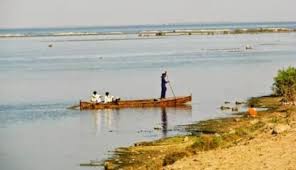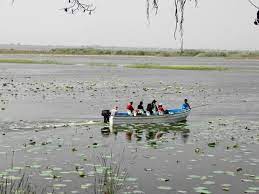 Broken Lifelines: Can Sindh’s Wetlands Be Saved from Climate Collapse?
Broken Lifelines: Can Sindh’s Wetlands Be Saved from Climate Collapse?
Suneel Kumar
Across the golden plains and whispering deserts of Sindh, life has always clung to water. Wetlands—those shimmering blue jewels scattered among salt flats and dunes—are the province’s hidden lifelines. From the vast Keenjhar Lake that quenches Karachi’s thirst to the mysterious Achro Thar lakes that feed migratory flocks, these waters have sustained people and wildlife for centuries. But today, this fragile heritage faces its gravest crisis.
The Achro Thar Wetland Complex, often called the White Desert, stretches across 4,800 square kilometers in Sanghar and Khairpur. Here, more than a hundred lakes—Botaar, Kalankar, Mathoon, Akro—form oases amid pale dunes. During winter, flocks of flamingos, pelicans, herons, and the endangered marbled teal descend to feed and breed. For generations, pastoral communities grazed their flocks and harvested fish among these lakes. But climate change is unravelling this delicate balance. Unpredictable rains, prolonged droughts, and punishing heat waves have shrunk the lakes to cracked pans of salt. In some years, sudden flash floods drown nests and wash away fish larvae, compounding the loss.
Further south, Haleji Lake—Asia’s second-largest bird sanctuary—is fading. Once a deep reservoir of fresh water supporting thousands of birds, it now faces inadequate inflows and encroachment. Jubho Lagoon and Nareri Lagoon, both Ramsar sites, have also seen alarming declines in bird populations as brackish water grows saltier and pollution spreads.
The Indus Delta, the fifth-largest in the world, holds the largest mangrove forests in Pakistan. Here, freshwater meets the Arabian Sea, creating a haven for dolphins, mud crabs, and migrating birds. But upstream diversions, unchecked pollution, and rising seas are choking these mangroves. Many creeks that once teemed with fish are turning lifeless.
 Meanwhile, powerful landlords divert Nara Canal water—Achro Thar’s main artery—leaving entire lakes dry. Desperate communities, robbed of fish and grazing land, now fell desert trees for fuel and income. The loss of vegetation magnifies heat and erosion, trapping families in a cycle of poverty. In the Indus Dolphin Reserve, dwindling river flows imperil the last surviving population of the blind Indus dolphin, a living relic of the river’s former abundance.
Meanwhile, powerful landlords divert Nara Canal water—Achro Thar’s main artery—leaving entire lakes dry. Desperate communities, robbed of fish and grazing land, now fell desert trees for fuel and income. The loss of vegetation magnifies heat and erosion, trapping families in a cycle of poverty. In the Indus Dolphin Reserve, dwindling river flows imperil the last surviving population of the blind Indus dolphin, a living relic of the river’s former abundance.
Yet there is still hope. Conservationists argue that formally recognizing the Achro Thar lakes as Ramsar sites could draw international attention and funding. Restoring regulated flows in the Nara Canal, cracking down on illegal water theft, and replanting native trees during the monsoon could reverse some damage. Community-led ecotourism, birdwatching initiatives, and sustainable fishing cooperatives could offer new livelihoods while protecting the ecosystem.
These wetlands are not mere backdrops to Sindh’s history—they are its beating heart. They filter water, buffer floods, and nourish cultural traditions older than memory itself. Losing them would mean losing a part of Sindh forever.
If we act now—honouring these shimmering reservoirs as treasures rather than wastelands—there is still time to ensure that the marbled teal returns, the mangroves stand tall, and Sindh’s wetlands remain sanctuaries for all life. In the struggle between survival and loss, the choice is ours.
